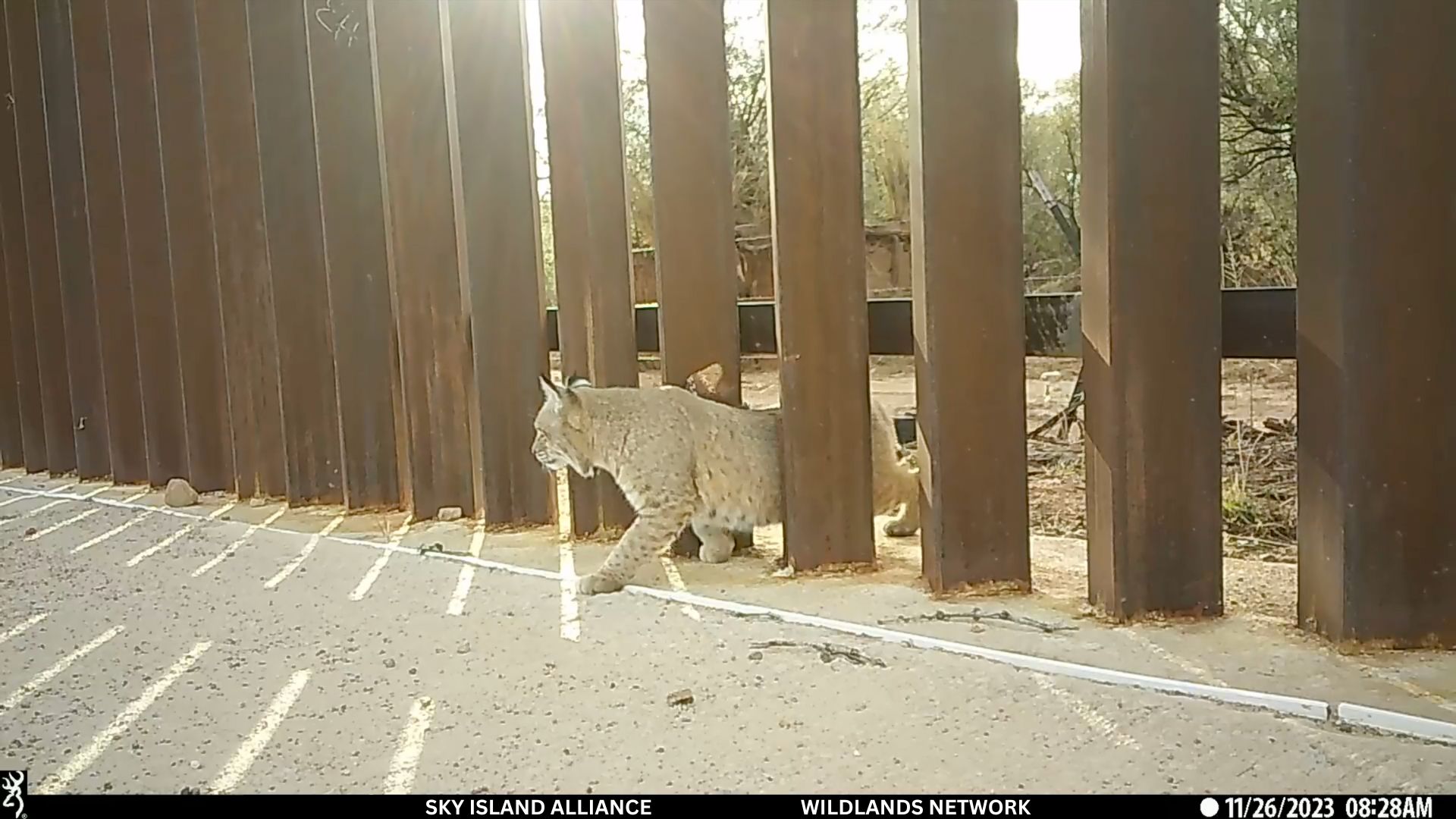 A bobcat is able to squeeze through one of the small wildlife passages in the U.S.-Mexico border wall.
A bobcat is able to squeeze through one of the small wildlife passages in the U.S.-Mexico border wall.Researchers with Wildlands Network and Sky Island Alliance found that small wildlife openings, added into the border wall, allow more connectivity for smaller animals like javelina, coyote, and even mountain lion.
Myles Traphagen, who worked on the study, said more frequent and larger openings are needed and that even a few inches more of gaps between the steel beams on the border wall can have an important benefit for wildlife.
“So we're trying to find pragmatic solutions to a border wall, which ironically, was not a pragmatic solution to immigration,” he said. “So we hope that the information that we've discovered can help us go forward in a real, pragmatic, data driven fashion, where we find solutions for everybody.”
Despite there being a border wall on more than 60% of Arizona’s international border, the state saw record highs of people crossing between ports of entry in the last year, including through openings cut through the steel bollards with relative ease.
Traphagen said, following a court settlement, the Biden Administration agreed to keep certain floodgates on the border in Arizona open for a minimum of two years, as well as four large wildlife openings in New Mexico.
“We've seen that wildlife have definitely benefited from having this open, and it has not been an excessive drain on the Border Patrol in terms of human migration,” he said. “And we would just like to see a lot more of these wildlife openings, because we've shown that they are effective.”
Traphagen said larger openings have an important benefit for wildlife. The study, published Thursday in the peer-reviewed Frontiers in Ecology and Evolution, also recommended the addition of more small wildlife passages and revealed that 16 different animals along the border are using them.

By submitting your comments, you hereby give AZPM the right to post your comments and potentially use them in any other form of media operated by this institution.